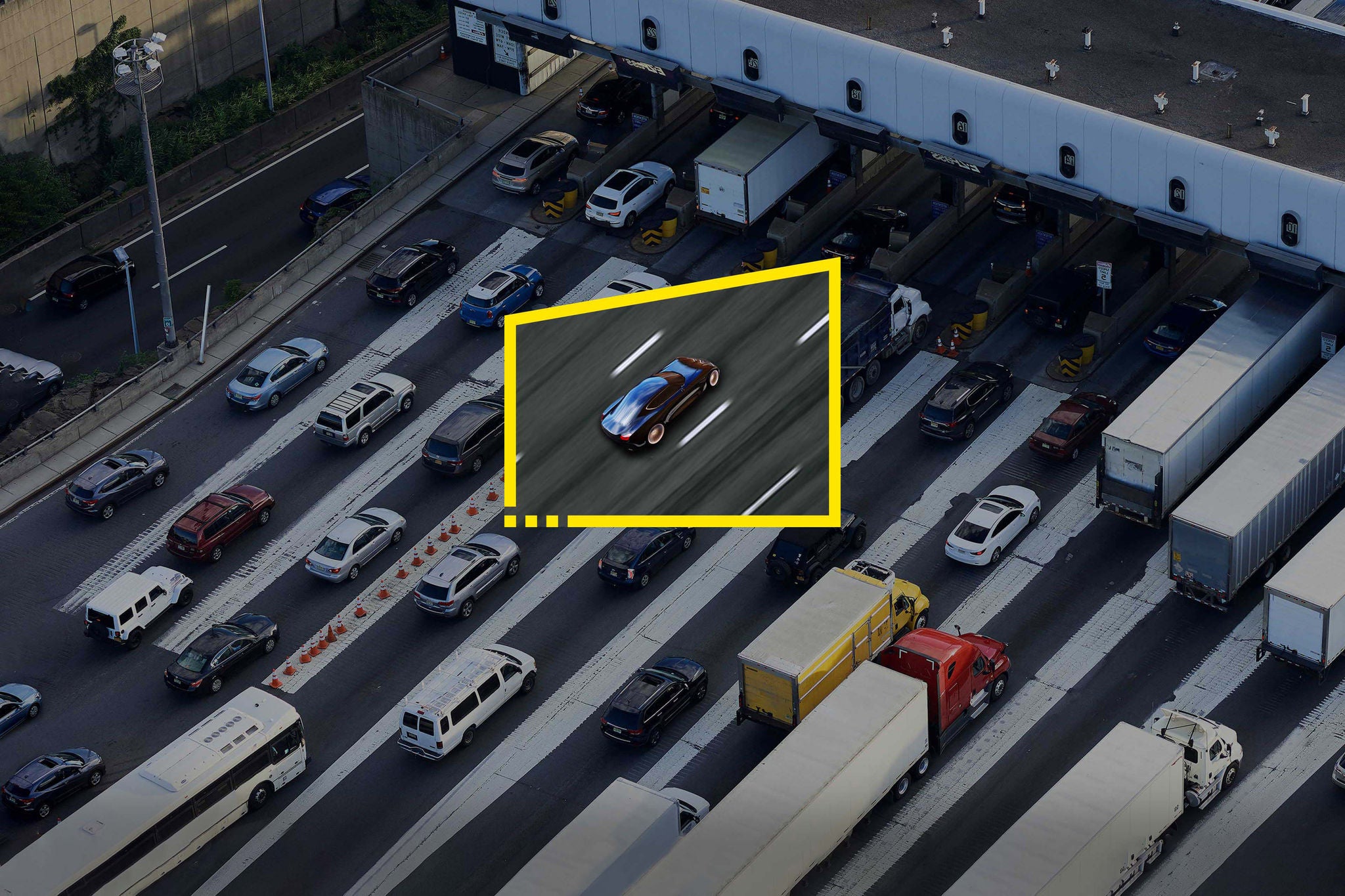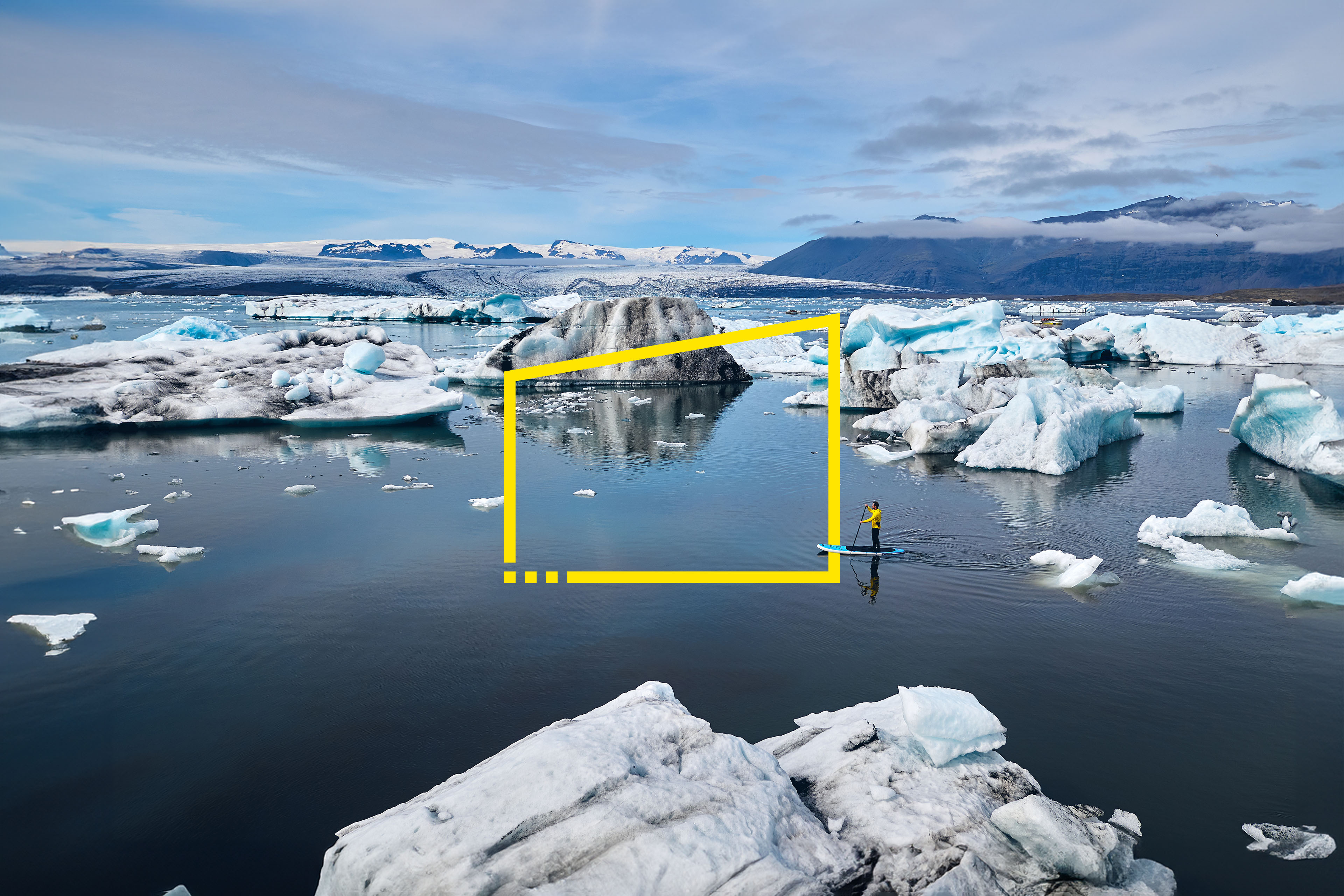EY refers to the global organization, and may refer to one or more, of the member firms of Ernst & Young Global Limited, each of which is a separate legal entity. Ernst & Young Global Limited, a UK company limited by guarantee, does not provide services to clients.

Ever more frequent shocks are reshaping the globe and our economy. Companies must plan for a more local, sustainable and digital world.
In brief
- Recurring disruption requires increased resiliency, with business decisions based on commercial and financial criteria, environmental values, and geopolitics.
- The global economic recovery is facing setbacks as energy costs rise, supply chains are reconfigured, cyber threats grow and sustainability efforts slow.
- As long-term trends accelerate, companies need flexible business models that can help solve societal challenges while weathering economic shocks.
The war in Ukraine marks a devastating shift across the worlds of society, geopolitics and business – they will not be the same for a long time. Yet the war is only the latest in an increasing number of unexpected disruptions impacting the global economy, and it won’t be the last.
Over the past 15 years, successive economic and geopolitical crises have quickly sent shockwaves throughout the world, affecting every country, economy, trading relationship and business operation. Amid continuing uncertainty around how the war in Ukraine may end — or escalate — business leaders are faced with the challenges of navigating in the dark, accelerating already urgent transformation plans, and building resilience for impacts that may yet strike.
Many of the challenges businesses are facing now echo what has transpired throughout the COVID-19 pandemic, from the initial uncertainty and initiatives to keep employees safe, to new ways of working and navigating broken supply chains.
With the war in Ukraine, much of the focus naturally has been on managing the immediate impact: making sure that people and operations are as safe as possible; resetting, exiting or idling operations in Russia and Ukraine; navigating sanctions; securing immediate resources; circumventing breaks in the supply chains; and supporting refugees and others immediately impacted by the war. And while solidarity and crisis management will continue to be urgent necessities for however long the war lasts, leaders must start to develop strategies for the midterm — and they must act fast.
The COVID-19 pandemic fast-tracked many transformations already in play. The need for resilience and agility, digitalization, hybrid working, supply chain diversification and sustainability were all in company plans before March 2020, but the pandemic served as a catalyst for business agendas.
The war in Ukraine has further compounded impacts still playing out from the pandemic, and the transformation timescale continues to compress. What would have happened in 7 to 10 years, under a “business as usual” trajectory, is now happening in 7 to 10 months. The pressure on leaders to act has never been so great or urgent, just as the data informing those decisions are increasingly volatile.
To help predict how the war in Ukraine will impact the future, geostrategic modelling has focused on different scenarios, from the optimistic near-term negotiated ending to a hot war with NATO. While we all hope for an end to the war, no one knows which possibility will play out, and few of us have the power to influence the outcome.
Instead, we can assume disruption is here to stay, and some form of protracted “cold war” that may reshape the geopolitical landscape is probable. Some consequences of the war — sanctions and counter-sanctions, commodity and energy shortages and price increases, inflation, supply chain fractures, changes in investor and consumer sentiment — will not disappear quickly.
As part of the CEO Imperative Series, which addresses critical issues and actions to help CEOs reframe the future of their organizations, this article explores the compound effects of cumulative, or snowballing, disruptions by outlining key macroeconomic shifts and their impact on supply chains, sustainability, and digitalization and cybersecurity.
Chapter 1
Will the global economic recovery be derailed?
Rising inflation, higher energy prices and volatile financial markets — aggravated by war — are responsible for regional setbacks.
While it seems probable that some economies will be very severely affected by the war in Ukraine, the short-term global drag on post-pandemic recovery is expected to level out at around 0.4 percentage points, pushing GDP growth toward 3.5% in 2022. Should the war intensify and spread, then impacts would be on a much greater scale, presenting a real risk of global recession.
Key headwinds that flow directly from the war include:
- Higher commodity prices, especially energy, metals, and some food and agricultural products
- Tightening fiscal conditions and intermediation stress, including capital outflows
- Increasing trade and supply chain disruptions
- Lower private sector confidence
These disruptions are intensified because they have emerged against a particularly sensitive backdrop featuring the highest inflation levels experienced in over two decades, elevated energy prices, strained supply chains and volatile financial markets. Central banks were already on a steep trajectory of setting higher interest rates before the war in Ukraine, but these rates are now expected to reach even higher levels as efforts to curb inflation increase.
While we have already seen a tightening monetary and fiscal policy, led by the US, and a winding down of the fiscal support of the pandemic, counterbalancing these moves is a growth of fiscal support for refugees, actions to increase energy independence and defense, especially in Central Europe.
Vaccines and COVID-19 therapies have reduced the crippling effects of the pandemic in many countries, and supply bottlenecks had begun to ease before the war in Ukraine. However, even if the pandemic becomes endemic, it is not yet over. Policies to fight COVID-19 vary, and China’s zero-tolerance COVID-19 policy, for example, continues to trigger lockdowns that disrupt supply flows.
Regional impacts as global trade slows
Russia and Ukraine
Russia and Ukraine both face deep economic crises, the former as economic and financial sanctions grip ever tighter: triggering the collapse of the ruble, the widespread withdrawal of foreign firms, and a foreseeable GDP loss of between 5% and 7% already in 2022. At the same time, foreign exchange depreciation and a shortage of imported goods will drive inflation into high double digits. In the unlikely event of China and India joining the call for sanctions, the negative impact on Russia would intensify by about 50%.
Economic activity in Ukraine has been severely disrupted by the war, and the longer-term impact will depend on its duration and scale. Infrastructure costs, modeled from other wars, point to potential GDP losses of up to 50% over multiple years. Even if the war ends soon, this could lead to double-digit GDP loss.
Europe
Europe also will be hard hit because of its significant trade and financial linkages with Ukraine and Russia. With surging energy and food prices weighing on household finances and tightening financial conditions constraining business activity, it seems likely that Eurozone GDP growth will be capped around 3.0% (factoring in a drag of more than 0.6 percentage points).
But even within Europe, there will be large differences, as the Baltic states and Cyprus will be hit hardest while southern Europe and Ireland will be relatively unaffected. Poland, Slovakia and, to a lesser extent, Hungary are seeing a huge refugee inflow that will boost consumption, fiscal spending and inflation. If oil and natural gas purchases are banned, the most impacted countries would include Hungary, the Baltics, Czechia, Slovakia, Germany and Italy.
United States
By contrast, the US economy, benefiting from solid economic momentum before the war in Ukraine, is more insulated than Europe from the most severe impacts. If pressed, the US could become energy-independent, but producers may be reluctant to increase drilling after several recent boom-and-bust cycles.
China
Facing lingering domestic headwinds from a downturn in real estate activity and its zero-tolerance COVID-19 policy, China’s GDP growth is expected to slow from 8.1% in 2021 to around 5% in 2022. India’s high oil import dependence (nearly 90% of its consumption) heavily exposes the country to the surge in commodity prices. Real GDP growth is likely to slow from 8.1% in 2021 toward 7% in 2022.
As companies consider how to factor in differing GDP growth predictions, business leaders will need to contend with the fragmentation of cross-border trade. While Russia will be isolated by the West, it will still be integrated with China and many other Asian countries. Commodity imports are likely to be replaced by alternative sources in preferred countries, but in some cases that will be difficult as certain supplies, like green minerals, are limited by location.
Other countries
Large energy exporters like Kuwait, United Arab Emirates, Kazakhstan, Saudi Arabia, Australia and Norway are benefiting, at least in the short term, from higher prices. By contrast, Egypt is particularly vulnerable to the effects of the war due to its dependence on wheat imports from Ukraine and Russia. Net importers of oil and other commodities, especially in Asia (Vietnam, Pakistan, Thailand, South Korea), will also lose out, with trade balances in these territories likely to deteriorate.
The global economic rebound that had begun in the wake of the pandemic is already facing some setbacks. But providing the war doesn’t settle into a prolonged and deepening conflict or spread to involve other actors, a global recession seems unlikely for the moment.
Chapter 2
The great supply chain reset
The need for multisourcing, sustainability and transparency, is pushing companies toward geopolitically-conscious, regional clusters.
The war in Ukraine has most likely signaled the end of singular, linear supply chains geared toward efficiency and optimization, but a number of shocks had already shattered international faith in this legacy model. The global pandemic, the Fukushima nuclear crisis and the blockage of the Suez Canal all exposed fractures and weaknesses in the linear supply chain. Companies have been steadily rethinking the design principles of supply models ever since in the search for resiliency.
The great supply chain reset is being driven by several factors:
- Reliance on single-source geographies has led to full production system shutdowns as well as fundamental shortages impacting critical medical and food supplies.
- Protectionism, via trade tariffs, has disrupted profit from entire markets, rendering specific supply chain structures and sourcing geographies unfeasible.
- Incentive regimes that previously drove large operations to remote locations have created long logistic chains and asymmetric talent needs.
- Fundamental international tax reforms have called into question the continued feasibility of central, co-located management hubs, triggering a connected decentralization.
- Consumers are seeking transparency in where their goods come from as they move toward responsible, circular and sustainable alternatives.
- Employees are demanding a sustainability agenda, including a supply chain, that is built on common social and environmental values.
- Business partners, investors and other stakeholders are also starting to apply sustainability-considerations for supply chains and networks.
The combination of these elements has shown that transnational networks built on efficiency and labor costs or regulatory arbitrage will no longer work. Geopolitics is having an effect as well, as shared values begin to play a bigger role in developing networks, complementing or at times potentially outweighing cost arguments. Regionally clustered suppliers and more active multisourcing, paired with sustainability and transparency concerns, are becoming the preferred model moving forward.
Building a sustainable supply chain strategy
In relation to the war in Ukraine, the immediate goal for many companies is to sustain supply and operations as much as possible. Operations in Russia, however, are currently often exited or paused, due to regulatory and sanction or countersanction constraints, as well as ethical and public relations considerations.
Looking ahead, the need to develop more sustainable and more geopolitically robust setups will increase, and the desire to employ more autonomous and sustainable production methods may lead to the mainstreaming of circular business models.
The cumulative effect of sustained supply chain shocks has created an environment where companies can no longer deny that problems can and will occur. As a result, business leaders have a stronger business case to pursue supply chain strategies that employ sustainable sourcing within a better carbon footprint, despite the increased costs.
Chapter 3
Sustainability takes a step back to move forward
The need for national energy security is slowing the transition to renewables, while increasing the urgency to develop alternatives.
It’s not just supply chains that are subject to a great reset, it’s what society rightfully expects of companies’ external impact on the environment. We are in the midst of a shift between designing for efficiency and profit to designing for sustainability and value.
Environmental, social and governance (ESG) metrics have already been major drivers of change, which have now been given a tailwind by disruption and increasing regulation. However, crisis management threatens to potentially derail sustainability strategies in the short term — for example, as the war in Ukraine changes how and where we source energy.
Sustainability is a top priority for businesses
Over the years, sustainability has gained importance with every climate impact report. Coming out of the financial crisis of 2008, a growing number of business leaders began to recognize how values could inform growth and help them better serve all stakeholders. The COVID-19 pandemic served as a strong and further catalyst. As people stayed home, energy demand and costs decreased dramatically. Extraction was at an all-time low, governments and utilities shut down high-polluting assets, and greenhouse gas emissions dropped. Investments began to shift toward energy transition and low-carbon alternatives as people realized that there could actually be another way.
These experiences proved that many theoretical concepts were more possible than once thought. The conversation had once again moved, and business leaders kept what was possible in mind even as economies began to rebound and energy demand — and prices — rose again. Coming out of the UN Climate Change Conference of the Parties (COP26) in November 2021, it was clear that business has a special responsibility and critical role to play in tackling the climate crisis.
A temporary setback in the race for renewables
The war in Ukraine has exacerbated the already rising costs of oil and gas, and sustainability has moved from a societal and environmental need to a geopolitical necessity. Some countries, particularly in the European Union, with a high dependency on energy imports, have pledged to accelerate the green transition, investing heavily in renewables to become more self-sufficient as well as more sustainable. But that isn’t a given across the world: even with COP26 pledges, decarbonization actions are patchy. Other net energy exporters may look at rising prices as an opportunity to scale up fossil fuel production.
In short, energy transformation is no longer optional. However, it is likely to take a step backward before it can move forward. Europe is in a rush for energy security as countries prepare for the next winter. That quest will see increased use of coal and nuclear in the short term as governments, businesses and consumers realize that the survival of the planet is important, but so is surviving today. Following these setbacks, the race for renewables will start again. And this time it will be driven not only by the need for decarbonization but also the need to increase national energy security.
Chapter 4
Digitalization and cybersecurity
Techno-nationalism and cyber threats are on the rise, endangering innovation and digital advances.
Potential disruption to digitization
Digital technologies were a major topic on the agenda of many companies before 2019, and they saw a dramatic boost during the COVID-19-pandemic, proving to be a savior to many businesses. But some of that success may be endangered by the war in Ukraine. The conflict may have a far-reaching impact on the digital economy because of two independent, yet related trends:
1. The global shortage of semiconductors is likely to worsen
This is already impacting sectors from computers to automakers. The global shortage of semiconductors, already impacting sectors from computers to automakers, is likely to worsen. Russia and Ukraine are major sources of critical green metals, such as palladium, nickel, platinum, rhodium and titanium, as well as rare gas neon and the chemical C4F6, essential for manufacturing not only chips but also solar voltaic panels. Any prolonged war and, with it, deepening trade sanctions will exacerbate global shortages of these critical metals, while global demand increases.
2. There may be broader impacts of sanctions against Russia’s import of technological goods
While financial sanctions have an immediate impact, controls on tech products may have long-term consequences. Cloud, aviation and defense technologies and oil-refining machinery all require regular upgrades and replacements. Sanctions that block access may accelerate moves we have already seen toward a clustering of technology as Russia, like China, seeks independence from the West.
The potential growth of techno-nationalism, started before the pandemic, is only intensified by the war in Ukraine, as Western democracies sever exchange programs and R&D collaborations with Russia and China. This potential near- and reshoring of intellectual assets may cause a general slowdown in the pace of innovation and technological advances.
Growing emphasis on cybersecurity
Digital innovation and transformation are also subject to cyber threats. The pandemic-induced urgency to transform caused many companies to overlook cybersecurity protocols, and more have paid the price since. In the EY Global Information Security Survey 2021, 77% of respondents report having seen an increase in disruptive attacks, up from 59% in the previous 12 months. Cybersecurity Ventures, a research agency, expects global cybercrime costs to grow by 15% per year over the next five years, reaching US$10.5t annually by 2025, up from US$3t in 2015.
Ransomware attacks, such as the shutdown of the US Colonial Pipeline in 2021, cost far more than the ransom itself: in this case full restoration of the system governing operations took days to complete and pushed the average price of a gallon of gas in the US beyond $3 for the first time in eight years. NotPetya, a wiper malware, targeted Ukraine banks in 2017 and quickly spread to more than 64 countries, as well as companies including Maersk, WPP and Merck, causing an estimated $10b in damage.
Not all companies have ignored these increasing threats: according to Gartner, worldwide security and risk management spending in 2021 exceeded $150b, 12.4% more than the previous year. As Internet of Things (IoT) devices scale and more and more business operations are fully digitalized, global spending on cybersecurity products and services are forecast to reach $1.75t cumulatively in the five-year period to 2025.
Last-minute fixes will not protect the critical infrastructure of companies or nations. A sustained, long-term strategic investment plan is needed, which can include:
- Embedding zero-trust architecture into digital systems
- Instigating good security hygiene protocols
- Ensuring that geopolitical risk assessments, physical security and cybersecurity work together
- Building relationship networks proactively to strengthen cyber defenses
Chapter 5
Doing business in an era of disruption
Strategic priorities need to shift from profit-focused efficiency to values-driven, sustainable performance and resilience.
The disruptive events of the past often have had short-term business impacts as leaders seek to return to a state of normalcy. However, we are now in an era of cumulative and extreme disruption that should more sustainably change future decision-making. For example, some immediate consequences of the war in Ukraine could be medium- to long-term — sanctions and counter-sanctions, commodity shortages, supply chain disruption — so companies need to factor them in as part of their agenda.
Long-term trends already in play before both COVID-19 and the war in Ukraine are accelerating: digitalization, changing consumer and employee expectations, and a pendulum swing back toward regionalization from globalization as we’ve known it. Leaders need to plan accordingly without getting stuck in the minutiae of the current moment.
The likely general redesign of business priorities from extreme efficiency and short-term profit to sustainable performance, resilience and values affects strategic priorities. It may become more important to build a sustainable, flexible but strong business model that is fit to contribute to the solution of big societal and environmental challenges as well as to sustain shocks and disruptions than to maximize short-term gains. Business leaders should focus on three key areas: operational concerns, resilience and leadership.
Operational concerns
1. Monitor the situation and plan in scenarios
Conditions remain extremely volatile, so planning in scenarios is crucial to be prepared for possible outcomes. Depending on the length of the war in Ukraine, how and when COVID-19 transitions from pandemic to endemic, and other geopolitical factors, the outlook can change drastically.
2. Reset the supply chain
Given the multitude of disruptive influences, the shape of globalization will change. Markets, production locations and supply chains have been affected, as well as networks and relationships to stakeholders. Sanctions and countersanctions; corporate policies; regulatory influences; ESG considerations; and the sentiments of consumers, investors and financiers have to be factored into a new globalized model. Supply chain footprints will have to be adapted, and primary and alternative sourcing will have to respect financial, commercial, ESG and geopolitical considerations.
3. Elevate ESG to the level of financial goals and end the era of compliance
Sustainability is no longer a burden — it’s a differentiator that is highly relevant for employees, investors, clients, consumers and many more stakeholders. Businesses cannot pursue profit with just compliance in mind. Leaders need to place commercial, social and ecological targets on the same level and work toward them in parallel. Companies with a strong sense of responsibility for all stakeholders need three things to come together: corporate policy with sustainable objectives, regulatory incentives and sanctions, and personal motivation.
Resilience
1. Make your company fully digital and cyber safe
Businesses that had widely implemented digital solutions on the production floors, in the back office and in relation to their clients have proved to be more resilient than others. Connectivity and transparency are often more easily achieved in periods of extreme disruption, so now is the time to act. The foreseeable transformation that companies will have to undertake, and the transparency needed in that context, make this even more important.
2. Manage performance and build resilience
Companies can only contribute to solving big social and environmental challenges while pursuing their long-term strategy if they continue to generate results. This will be challenging in a period of extreme disruption and the resulting transformation. Success will need to be redefined as social and environmental values find their way onto the scorecard — and not only as compliance aspects.
Leadership
1. Listen and make yourself heard
This is a time for an intense dialogue with clients, consumers, existing and future employees, investors, industry colleagues and other stakeholders. They all have to navigate in the dark, and we can get smarter together. It is also a time for an intense exchange with politicians, as they will have to provide the regulatory environment for necessary changes and depend on your input.
2. Pivot from management to leadership
Crisis management is as necessary as it is reactive. A proactive approach is needed to shape the company’s future and its contribution to society. While optimizing the allocation of resources works best under stable circumstances, disruption makes that impossible. It’s time to move away from task-based management and focus leadership on an overarching agenda. However, as important as it is to develop a more sustainable strategy, it remains important to show solidarity, have an opinion and voice it in a period of incredible hardship and suffering for many.
Summary
Disruptions are no longer discrete events — crises to be managed and moved past. They have become so frequent that their business impact is now cumulative, with effects felt throughout the global economy and society as a whole. In this era of disruption, leadership requires a proactive focus on values and sustainability that can better weather the shocks of geopolitical tension, climate change, supply chain disruption and cyber threats.
Related articles
How will the shifting world order affect your global strategy?
A multipolar world is emerging, requiring a strategic approach to managing political risk. CEOs must understand fundamental geostrategic shifts to plan for the future. Learn more.
The COO Imperative: Are you ready to reframe operations for resilience and sustainability?
In a changed world, COOs need to take the lead rethinking operations for resilience and sustainability. Learn more.
The CEO Imperative: How can policymakers help you weather today’s geopolitical storms?
Global disruption has been intensified by the war in Ukraine, find out how companies can work with governments as they address critical policy dilemmas.




